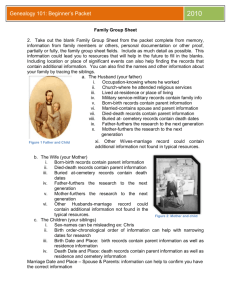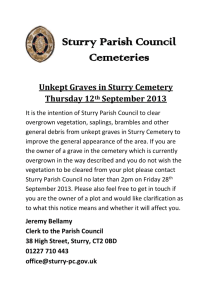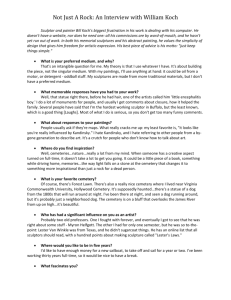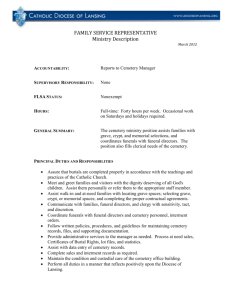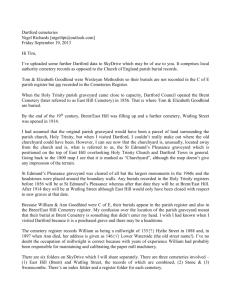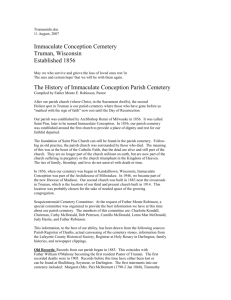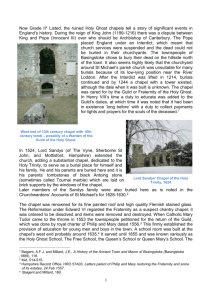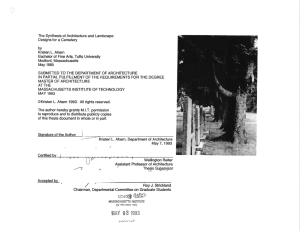A Brief History of the Cemetery by Mr J N Curtis
advertisement
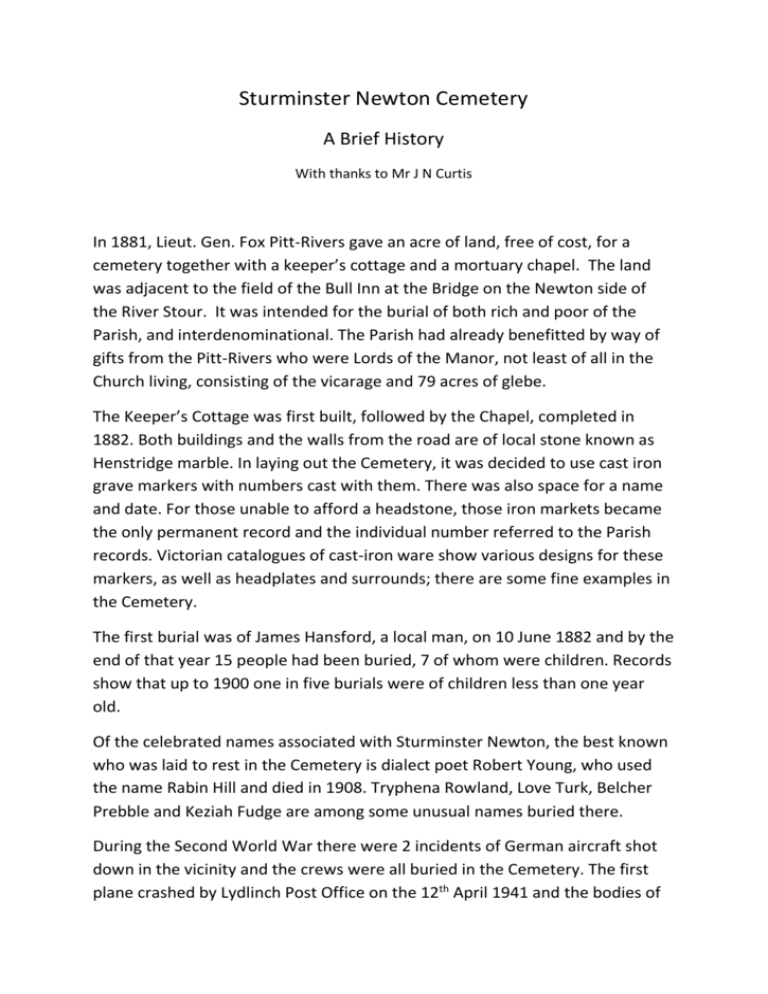
Sturminster Newton Cemetery A Brief History With thanks to Mr J N Curtis In 1881, Lieut. Gen. Fox Pitt-Rivers gave an acre of land, free of cost, for a cemetery together with a keeper’s cottage and a mortuary chapel. The land was adjacent to the field of the Bull Inn at the Bridge on the Newton side of the River Stour. It was intended for the burial of both rich and poor of the Parish, and interdenominational. The Parish had already benefitted by way of gifts from the Pitt-Rivers who were Lords of the Manor, not least of all in the Church living, consisting of the vicarage and 79 acres of glebe. The Keeper’s Cottage was first built, followed by the Chapel, completed in 1882. Both buildings and the walls from the road are of local stone known as Henstridge marble. In laying out the Cemetery, it was decided to use cast iron grave markers with numbers cast with them. There was also space for a name and date. For those unable to afford a headstone, those iron markets became the only permanent record and the individual number referred to the Parish records. Victorian catalogues of cast-iron ware show various designs for these markers, as well as headplates and surrounds; there are some fine examples in the Cemetery. The first burial was of James Hansford, a local man, on 10 June 1882 and by the end of that year 15 people had been buried, 7 of whom were children. Records show that up to 1900 one in five burials were of children less than one year old. Of the celebrated names associated with Sturminster Newton, the best known who was laid to rest in the Cemetery is dialect poet Robert Young, who used the name Rabin Hill and died in 1908. Tryphena Rowland, Love Turk, Belcher Prebble and Keziah Fudge are among some unusual names buried there. During the Second World War there were 2 incidents of German aircraft shot down in the vicinity and the crews were all buried in the Cemetery. The first plane crashed by Lydlinch Post Office on the 12th April 1941 and the bodies of the two unfortunate crew were dismembered by exploding bombs in their aircraft. Oberfeldwebel Franke and Huteroffizer Roth were buried 2 days later. The second crash was on 15th June 1941 near Salkeld Bridge between Plumber Manor and Puxey Farm and all five crew members were killed. The graves remained in the Cemetery until 1963 when they were exhumed and moved to a German War Cemetery. Unlike many churchyards and cemeteries, the Ministry of Supply (Iron and Steel Control) were unable to purchase the railings and grave markers during the war years. In 1941 the Ministry’s proposal, made by Sir James Merchant were met by the Parish Council’s comment that “It would not be considered as long as the unsightly dumps of iron around the countryside remained.” It was resolved that Sir James’ application to purchase the iron be not entertained! Despite further appeals from the Ministry the Council remained adamant that the fine railings and cast-iron ware remain to this day. There have been two extensions to the Cemetery. The first being half an acre in 1932 purchased from the Pitt-Rivers Estate and further land in 1955 at which time a right of entry was granted through from ‘Common Lane’ at ‘Four Gates.’ Today there are some fifteen burials each year and a Garden of Remembrance, for the interment of cremated remains. The Chapel is used by a local undertaker as a chapel of rest for local people and can be used by arrangement for short services followed by interment. The Cemetery is open to the public at any time.

